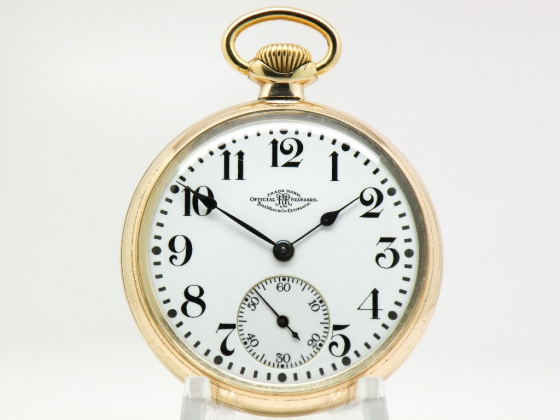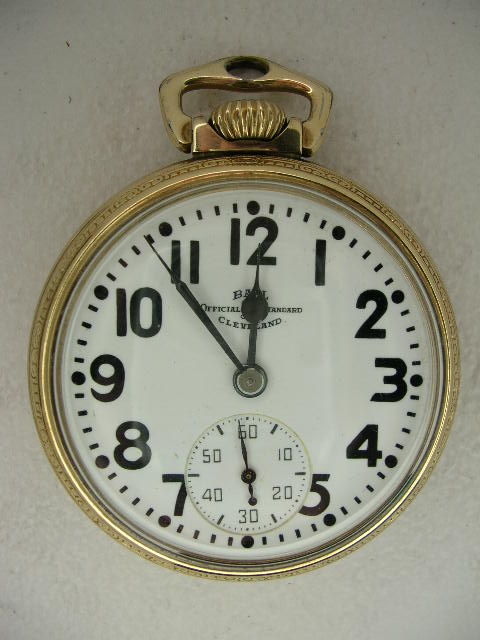
When first adopted in 1893, the regulations regarding dials stated, “Use plain Arabic numbers printed bold and black on a white dial, and have bold and black hands.” Though there were some elaborate enamel dials during the era, the railroad dials were more about being functional and legible. Watches were numbered and marked “Loaner” on the back case and in the event of a lost loaner, the cost of the watch was charged to the employee. When a watch was under service, the CPR used to supply to his employees a temporary watch called “the loaner”. All the time keeping activity was subject to inspection by authorized inspectors. Small cards were given to the engineers and conductors, the railroad timekeepers, and a complete record of the watch’s performances was written in ink.Īll repairs, overhauling and adjustments were made by approved and experienced watchmakers. According to regulations, if the watch fell behind or gained 30 seconds in seven or 14 days it was required to be submitted for overhauling or repairs. At CPR, the cost was deducted monthly from salaries in three-months installments. Interestingly, the railroad staff were compelled to buy these approved timepieces at their own costs. railroad staff.Īn exception is the Longines Ref T905, a railroad wristwatch that was on the Union Pacific Railroad approved list. According to a Wittnauer Material catalogue from 1911, Longines pocketwatches were used by U.S. railroad companies opted for American watches, probably down to a traditional policy of “buying American” although some exceptions are known. The following requirements for railroad-approved watches were set by RD Montgomery, general inspector of Santa Fé Railway system in 1930: “The regulation watch designated as of 1930 to be standard is described as follows: 16 size, American, lever-setting, 19 jewels or more, open face, winding at ‘12’, double-roller escapement, steel escape wheel, adjusted to five positions, temperature and isochronism, which will rate within a variation not exceeding 6 seconds in 72 hours tests, pendant up, dial up and dial down, and to be regulated to run within a variation not exceeding 30 seconds per week”.Ĭanadian Pacific and Canadian National sourced approved Swiss brands, both pocket and wristwatches. Some Railroads wanted Breguet hairspring, adjusted to isochronism and 30 degree Fahrenheit and minimum of 19 jewels.” The general railroad timepiece standards have been adopted since 1893 and any watch used in rail service by railroaders responsible for schedules has to meet the following mechanical standards: “Be open face, size 18 or 16, have a minimum of 17 jewels, adjusted to minimum five positions, adjusted to temperatures of 34 to 100 degrees Fahrenheit (-1 to +38 grade Centigrade), steel escape wheel, lever set, micrometric regulation, Lépine caliber.

Railroad companies set up the Time Service Department based on the system invented by Ball. He would go on to establish later his own eponymous watch company.

As a result, expert witness Webb C Ball, a known jeweler from Cleveland, was tasked with setting up a watch inspection system for railroad companies.īall was appointed general watch inspector for many North American, Canadian and Mexican Railroads. As result, the two trains collided, resulting in the loss of lives.ĭuring an inquiry into the incident, it was learned that the passenger train’s engineer was wearing a cheap alarm watch. Despite written orders to stop and let the fast train pass, the engineer and conductor of the passenger train did not notice that his watch was running four minutes late. This followed a collision in April 1891 between two trains in Elyria, near Cleveland.

for the authorities to realize the importance of watch standardization and a watch inspection system. However, it took a national tragedy in the U.S. In November 1883, almost 600 railroad lines dropped the 53 arbitrary times they were using and adopted the Greenwich indexed meridians that defined the times in each of the four new time zones (Eastern, Central, Mountain and Pacific).

North American and Canada Railroads started the concept of Standard Time in May 1872, when the Association of Railroad Superintendents, a forerunner of the Association of American Railroads, met at the Southern Hotel in St.


 0 kommentar(er)
0 kommentar(er)
